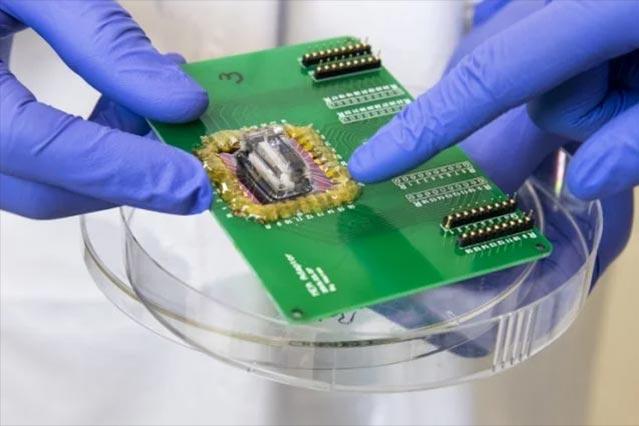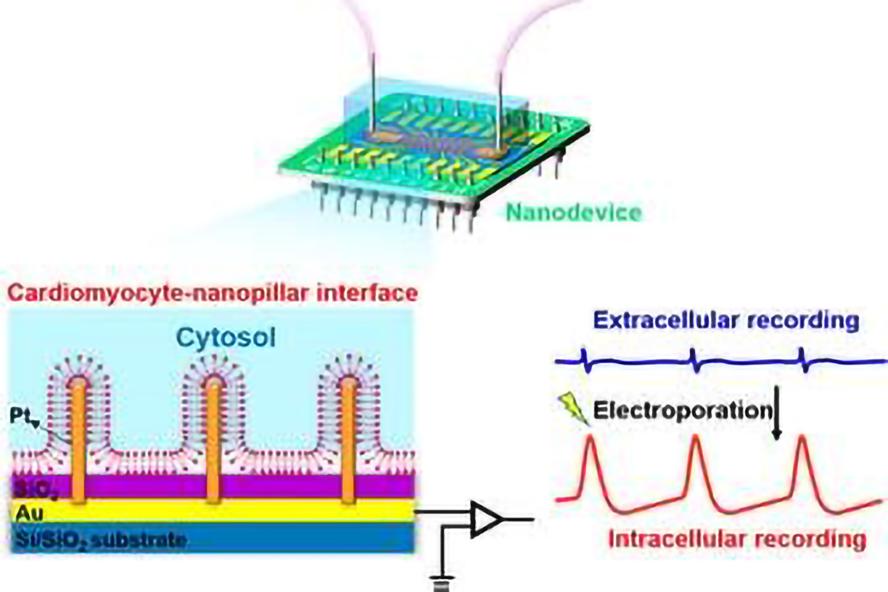Current Research Projects
Please send examples of research projects being conducted in the lab to lab staff for inclusion on this page.
MEMS Microphones for Cryogenic Quench Detection
Researchers at Tufts, MIT and Tanner Research teamed up to build MEMS microphone arrays that can be inserted into the coolant space inside superconducting cables. The goal is to detect the onset of quench failures quickly enough that the magnet can be shut down safely with no damage. This has applications in fusion power, high energy physics, and renewable energy. A major challenge is operating MEM microphones in cryogenic fluids.
Students: Zijia Zhao, Peter Moore, Mischael Anilus, David Zhang, Odin Doolittle, Reid Baris, Aidan Beckett, ME
Advisors: Professor Robert White, ME, and Professor Luisa Chiesa, ME
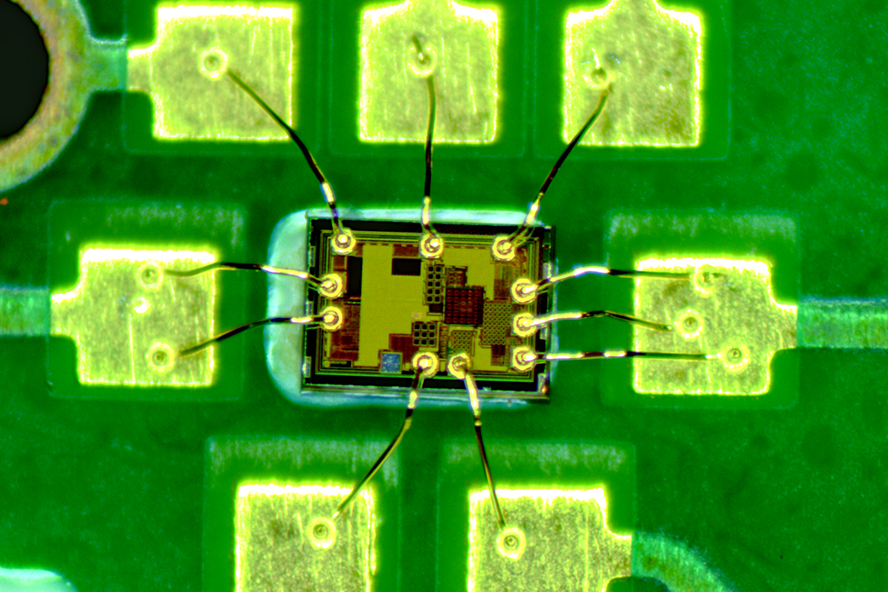
A preamplifier ASIC bonded out to a test board ready for testing at temperatures below 10 K.
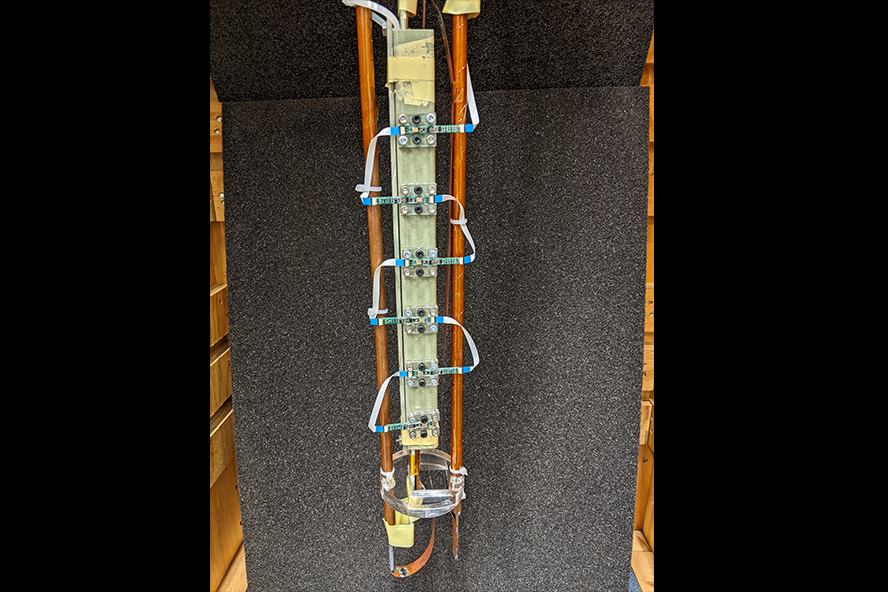
An image of the cyrogenic probe with six MEMS microphone boards assembled into a linear array, ready for testing with a superconducting REBCO tape.
MEMS Shear Sensors for Aerodynamic Measurement
Researchers at Tufts have been developing MEMS shear sensors with are capable of independently determining the pressure gradient vector and the shear stress vector at the surface. This is necessary to measure the complete skin friction force produced on an aerodynamic surface. Most existing shear sensors ignore the pressure gradient term.
Students: Zhengxin Zhao, Nikolas Kastor, ME
Advisors: Professor Robert White, ME
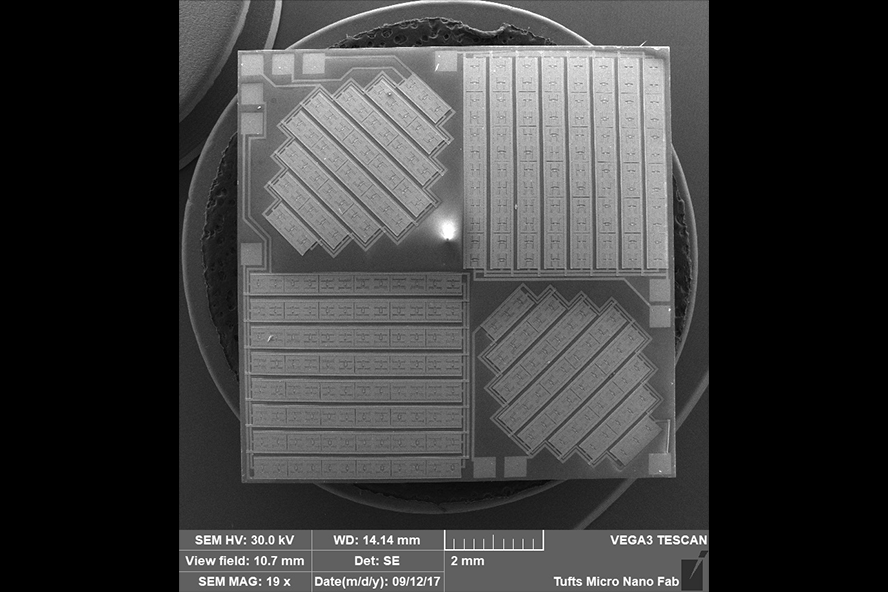
SEM image of the MEMS shear sensor chip with all four quadrant sensors visible. This is a nickel-on-glass microsystem.
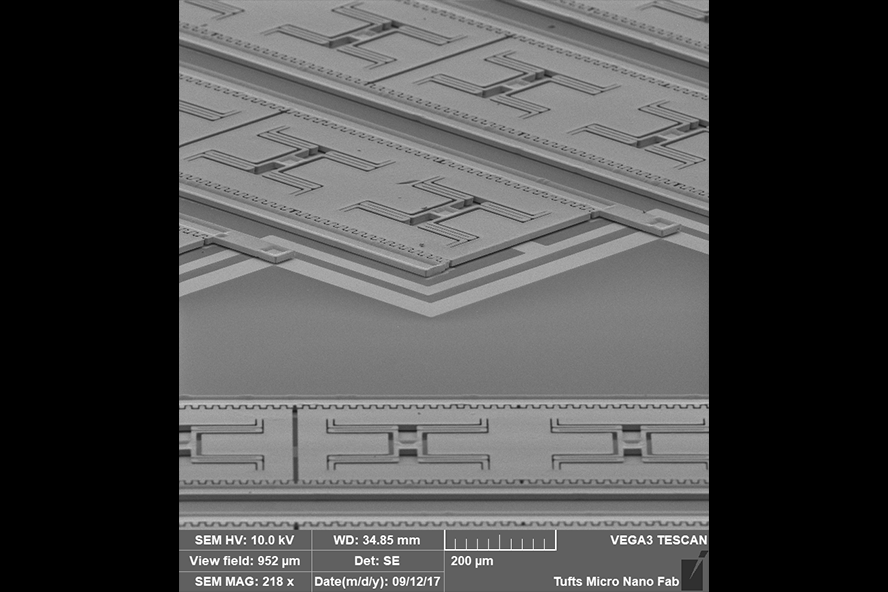
SEM image of the MEMS shear sensors. This is a nickel-on-glass microsystem.
MEMS Capacitive Ultrasound Transducers for Air Coupled Ultrasound
Researchers at Tufts have been developing air-coupled ultrasound transmitters and receivers for use in navigation, range-finding, and flow measurement. These devices operated in the 100-200 kHz range and can be used for Doppler velocity measurement, wind measurement, and distance measurement. The array chips are composed of 182 diaphragms, each 0.6 mm in diameter in a hex grid. Detection range is 1.5 meters at atmospheric pressure.
Students: Minchul Shin, Xinyu Shi, ME
Advisors: Professor Robert White, ME
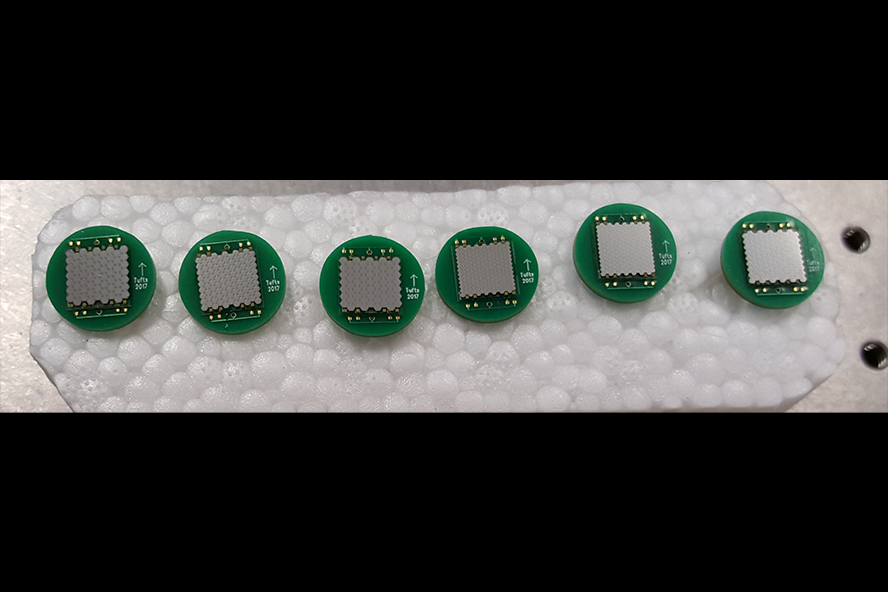
A set of the Tufts MEMS transducer arrays mounted on printed circuit boards.
Heart on a Chip Model
A bioelectronic heart-on-a-chip model for studying the effects of acute hypoxia on cardiac function. A microfluidic channel enabled rapid modulation of medium oxygenation, which mimicked the regimes induced by a temporary coronary occlusion and reversibly activated hypoxia-related transduction pathways in HL-1 cardiac model cells. Extracellular bioelectronics provided continuous readouts demonstrating that hypoxic cells experienced an initial period of tachycardia followed by a reduction in beat rate and eventually arrhythmia. Article is available with open access.
PI: Professor Brian Timko, BME
